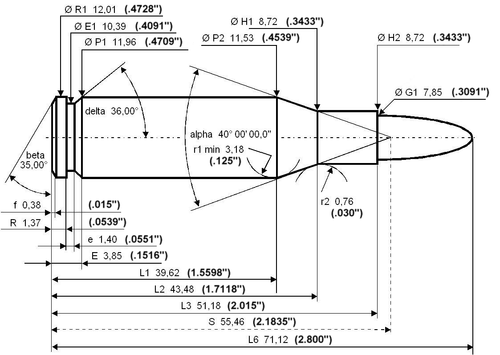A little over two years ago, we shared a graphic on the common misunderstandings of the common .308 Winchester vs. the 7.62×51 NATO cartridge. Astute readers pointed out that the chamber pressure readers were incorrect on the graphic (which we did not create – only shared), which is true – a common mistake between PSI (Pounds per Square Inch) and CUP (Copper Units of Pressure). The 50,000 PSI of 7.62×51 NATO actually runs closer to .308 Win in pressure that the graphic would lead one to believe.
CUP and PSI do not have a formal mathematical formula for conversion, so we have to rely on various estimates, which put the difference at about 8,000 PSI, meaning 7.62×51 NATO is 58,000 PSI nominal, only 4,000 less than the .308 Win. In fact, that’s only about a 7% difference.
Where the graphic was wrong on the pressure, the differences in case thickness and headspace are spot-on. For functionality across all adverse conditions including machine-guns and cyclic fire, 7.62×51 runs a much longer headspacing. This is 100% normal as is actually part of the design of the NATO round.
So, combined with the thinner brass, slightly higher pressure on the cartridge and the potential for really long headspace, it is still not advisable to fire .308 Winchester from a 7.62×51 NATO chambered weapon. The thinner brass of .308 can stretch and in worst-case, rupture causing a catastrophic failure. This is especially true for roller-locked guns which are more violent during extraction. See our long-ago video on polymer ammunition, which functions well out of standard rotating-bolt guns but had issues in roller-locked weapons.
For the full details, check out Tom McHale’s article over at AmmoLand.
 Your Privacy Choices
Your Privacy Choices
